
How liquid asset secured financing helps with cash flow

Hybridization driving demand

What is a CLO?

An investor’s guide to marketplace lending

Beyond Mars, AeroVironment’s earthly expansion fueled by U.S. Bank

What type of loan is right for your business?

ABL mythbusters: The truth about asset-based lending

Can ABL options fuel your business — and keep it running?

When small companies buy big: The potential of asset-based lending

Collateral options for ABL: What’s eligible, what’s not?

Maximizing your infrastructure finance project with a full suite trustee and agent

Integrating regulated and unregulated debt investment vehicles

How to maximise your infrastructure finance project

Private equity and the full-service administrator

Evaluating interest rate risk creating risk management strategy

How to improve your business network security

Changes in credit reporting and what it means for homebuyers

What’s the difference between Fannie Mae and Freddie Mac?

Tech lifecycle refresh: A tale of two philosophies

4 benefits of independent loan agents

Middle-market direct lending: Obstacles and opportunities

At your service: outsourcing loan agency work

Tailor Ridge eBill case study

5 steps to take before transitioning your business

Streamline operations with all-in-one small business financial support

How I did it: Turned my side hustle into a full-time job

Opening a business on a budget during COVID-19

How to fund your business without using 401(k) savings

How to test new business ideas

How to establish your business credit score

How to get started creating your business plan

Costs to consider when starting a business

How to expand your business: Does a new location make sense?

Common small business banking questions, answered

3 signs it’s time for your business to switch banks

How a small business is moving forward during COVID-19

When to consider switching banks for your business

Prioritizing payroll during the COVID-19 pandemic

How jumbo loans can help home buyers and your builder business

5 tips to help you land a small business loan

Does your side business need a separate bank account?

How to establish your business credit score

Leverage credit wisely to plug business cash flow gaps

Investing in capital expenditures: What to discuss with key partners

5 financial goals for the new year

Year-end financial checklist

How to manage your finances when you're self-employed

Reviewing your beneficiaries: A 5-step guide

Good debt vs. bad debt: Know the difference

How to talk about money with your family

5 unexpected retirement expenses

Retirement planning in the gig economy

Key milestone ages as you near and start retirement

Comparing term vs. permanent life insurance

The connection between your health and financial well-being

7 things to know about long-term care insurance

8 steps to choosing a health insurance plan

Is a Health Savings Account missing from your retirement plan?

3 types of insurance you shouldn’t ignore

What is Medicare? Understanding your coverage options

Is your employer long term disability insurance enough?

How much life insurance do I need?

How to be prepared for tax season as a gig worker

Student checklist: Preparing for college

Webinar: Uncover the cost: College diploma

Co-signing 101: Applying for a loan with co-borrower

How I did it: Paid off student loans

Practical money skills and financial tips for college students

How to build credit as a student

The A to Z’s of college loan terms

Recognize. React. Report. Caregivers can help protect against financial exploitation

How you can prevent identity theft

Webinar: U.S. Bank asks: Are you safe from fraud?

Planning self-care moments that matter (and how to finance them)

Adulting 101: How to make a budget plan

What’s your financial IQ? Game-night edition

Personal loans first-timer's guide: 7 questions to ask

Booming in the gig economy: A new chapter leveraging 45 years of experience
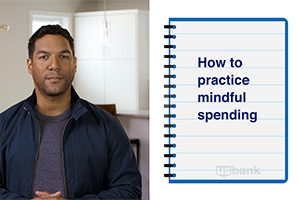
Webinar: Mindset Matters: How to practice mindful spending

Stay on budget — and on the go — with a mobile banking app

Common unexpected expenses and three ways to pay for them

Here’s how to create a budget for yourself

7 steps: How couples and single parents can prepare for child care costs

Tips for working in the gig economy

Earning in the gig economy: Gladys shares her story

By the numbers: The gig economy

A passion for fashion: How this student works the gig economy

5 tips to use your credit card wisely and steer clear of debt

Money Moments: 3 smart financial strategies when caring for aging parents

What’s in your emergency fund?

Understanding guardianship and power of attorney in banking

Is a home equity loan for college the right choice for your student

Your financial aid guide: What are your options?

Parent checklist: Preparing for college

How to apply for federal student aid through the FAFSA

Be careful when taking out student loans

Everything you need to know about consolidating debts

5 tips to use your credit card wisely and steer clear of debt

How to use credit cards wisely for a vacation budget

5 steps to selecting your first credit card

What’s a subordination agreement, and why does it matter?

Know your debt-to-income ratio

How to use debt to build wealth

Understanding the true cost of borrowing: What is amortization, and why does it matter?

Your quick guide to loans and obtaining credit

Dear Money Mentor: What is cash-out refinancing and is it right for you?

Overcoming high interest rates: Getting your homeownership goals back on track

Dear Money Mentor: How do I begin paying off credit card debt?

What are conforming loan limits and why are they increasing

How I did it: My house remodel

Money Moments: How to finance a home addition

What is a home equity line of credit (HELOC) and what can it be used for?

Webinar: Mortgage basics: What is refinancing, and is it right for you?

Should you get a home equity loan or a home equity line of credit?

These small home improvement projects offer big returns on investment
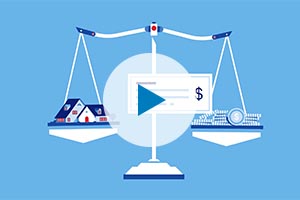
Webinar: Mortgage basics: How much house can you afford?

Webinar: Mortgage basics: Prequalification or pre-approval – What do I need?

Is it the right time to refinance your mortgage?

What is refinancing a mortgage?

What to know when buying a home with your significant other
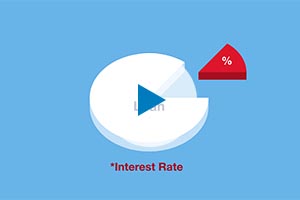
Webinar: Mortgage basics: What’s the difference between interest rate and annual percentage rate?
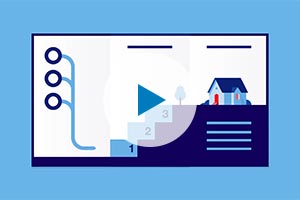
Webinar: Mortgage basics: 3 Key steps in the homebuying process

How do I prequalify for a mortgage?
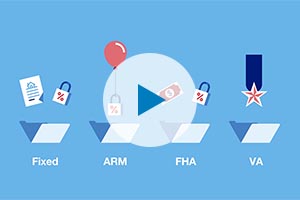
Webinar: Mortgage basics: Finding the right home loan for you

Webinar: Mortgage basics: Buying or renting – What’s right for you?

Webinar: Mortgage basics: How does your credit score impact the homebuying experience?

Is a home equity line of credit (HELOC) right for you?

Can you take advantage of the dead equity in your home?

How to use your home equity to finance home improvements

4 questions to ask before you buy an investment property

10 uses for a home equity loan

8 steps to take before you buy a home

6 questions to ask before buying a new home

Improving your credit score: Truth and myths revealed

Test your loan savvy

Credit: Do you understand it?

How to build and maintain a solid credit history and score

Should you give your child a college credit card?

Myth vs. truth: What affects your credit score?

Decoding credit: Understanding the 5 C’s

6 essential credit report terms to know

5 unique ways to take your credit card benefits further

What types of credit scores qualify for a mortgage?

What is a good credit score?

U.S. Bank asks: What do you know about credit?

How to improve your credit score

What you need to know before buying a new or used car

How to choose the best car loan for you

Questions to ask before buying a car

What you should know about buying a car


